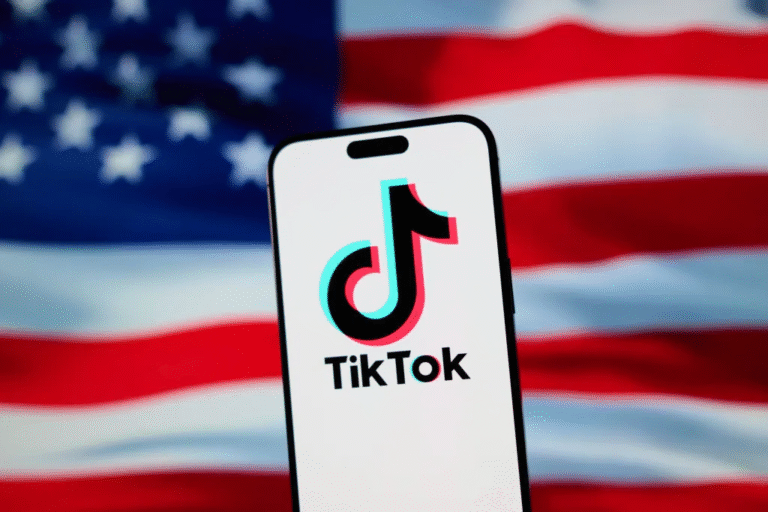After months of negotiations and geopolitical tensions, the United States and China have finally agreed on TikTok, in a major development in one of the most acrid tech wars between the two superpowers. The two nations are now ready to implement the long-awaited agreement, U.S. Treasury Secretary Scott Bessent said.
The agreement would at last reveal what’s to become of the wildly popular short-video app, which has been threatened with a U.S. ban if its Chinese parent firm, ByteDance, did not divest its American business.
Deal Done Early Sunday Before Leaders’ Meeting
CBS’ Face the Nation on Sunday, Bessent revealed that Washington and Beijing have now agreed on all substantive terms of the deal for TikTok.
We had agreed on one in Madrid, and I believe that today all the pieces are in place,” Bessent said. “That will be up to the two leaders to close that transaction on Thursday in Korea.”
While he would not comment on the minutiae of the deal, Bessent did verify that America was successful in gaining China’s approval for the deal, labeling it “a significant step forward” following several months of see-sawing diplomacy.
The final accord is scheduled to be signed off on officially by President Donald Trump and Chinese President Xi Jinping in a scheduled meeting later this week in Seoul, an unusual moment of unity for the two economic titans.
Background: TikTok’s Long Battle in Washington
Ownership by TikTok has been a contentious issue in U.S.-China relations for years. There have long been national security concerns on the part of American officials over Chinese ownership of the app owing to possible user data and algorithm control risks.
Under a 2024 law signed by President Trump, ByteDance was forced to spin off U.S. operations of TikTok or face an outright ban. Multiple extensions were granted to allow for negotiations, as the platform — used by more than 170 million Americans — became deeply integrated into the nation’s digital and cultural landscape.
The new structure is reported to create a board of directors headquartered in the U.S. to oversee TikTok’s domestic operations. Cloud and data security activities for the app will be managed by technology giant Oracle, while ByteDance will have its function limited under scrutiny from U.S. regulators.
Who Owns the New Company
Several big American investors are reported to own a piece of the new TikTok company. These include:
Oracle Corporation, led by veteran Trump ally Larry Ellison, that will manage data integrity and storage.
Fox Corporation, the parent company of Fox News, whose participation in the deal has been publicly confirmed by President Trump.
Andreessen Horowitz and Silver Lake Management, two large venture capital firms which have deep foundations in America’s technology community.
Together, these investors aim to create a U.S. corporate entity that satisfies national security conditions but maintains TikTok’s global functionality and user interface.
Negotiations Broaden Beyond TikTok: Trade and Technology

Bessent addressed in Kuala Lumpur, Malaysia, where the two nations’ negotiators were talking about an expansive economic framework. Apart from the TikTok negotiations, the U.S. Trade Representative Jamieson Greer added that Washington and Beijing had made progress on issues involving tariffs and rare earths — a key component of producing semiconductors and other sophisticated technology.
“We talked about the prolongation of the ceasefire, we talked about rare earths, obviously we talked about all kinds of issues,” Greer said.
China, the dominant source of most of the world’s rare earth elements, previously signaled it could ease export restrictions on the elements — a move that would have immense consequences for U.S. technology and defense industries.
A Turning Point in U.S.-China Tech Relations
If it’s signed on time, the TikTok deal would be a symbolic easing of Beijing-Washington tech tensions. It also reflects growing realization that complete decoupling between the world’s two largest economies is impossible in the age of the internet.
For the United States, the agreement assures greater dominance over TikTok’s US data and algorithms. For China, it’s a diplomatic win — allowing ByteDance to retain partial control while demonstrating respect in the face of international pressure.
As the two nations prepare to finalize the pact in Korea later this week, tech watchers are calling it one of the most significant tech deals of the decade, with potential spillover effects in global data regulation, trade policy, and social media oversight.
Bottom Line
After years of uncertainty, the fate of TikTok in the United States may finally be secure — in fresh hands, fresh regulation, and a fresh age of U.S.-China collaboration. The coming days will tell us whether this landmark deal signals a new age of stability, or just the curtain-raiser to round two of great power tech wars.







